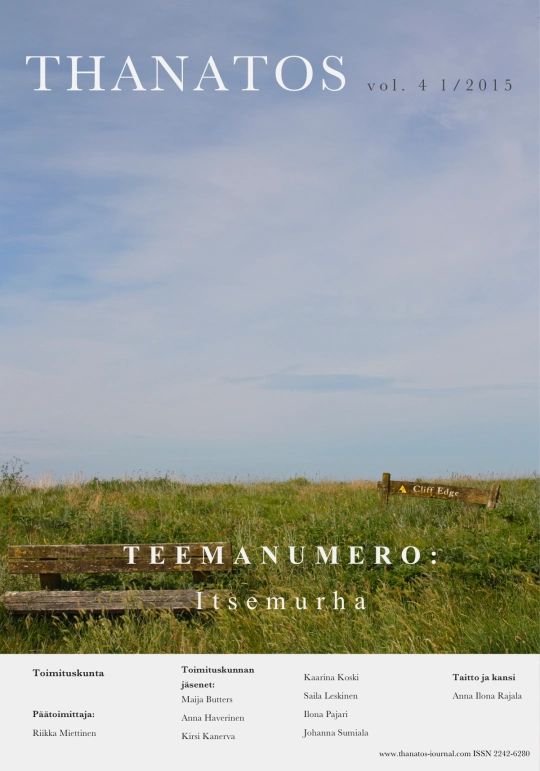The Death of the Others and the Taboo: Suicide Represented
Abstract
The visual representations of suicide have a lengthy history in Western culture, within which selfannihilation is considered a taboo form of death. In the long reach of the established traditions, the images of suicide have done more than simply illustrate the moral attitudes of their time. Through the versatility of existing templates and signs, images of suicide have posed as vehicles of ideological change; and, within inter-discursive mythologies, they have participated in cultural meaning-making processes around the conceptions of suicide, from the ethics of suicide to its agents, methods, and causes.
This article studies the representations of otherness in the suicide depictions of contemporary AngloAmerican cinema, in connection to the Western artistic canon from its suicides obsidionaux in classical antiquity to the imagery of the prostitute in Victorian England. In his research Ron Brown (2001) has noted that the artistic canon of suicide reveals frequent overlaps between several constructions of otherness, from ethnicity to social class, madness, gender and deviant sexuality. Focusing particularly on the representations of gender and sexualities, the article studies the differentiations employed and enforced by the representations of egoistic suicide. I connect Anglo-American contemporary cinema to the continuum of meaning-making visual representations initiated in the artistic canon, and reflect on how characterisations of madness and projections of suicide upon states of otherness participate in the stigmatisation and ‘cultural tabooing’ of suicide. Drawing links to a quantitative research by Steven Stack and Barbara Bowman (2012), my qualitative, small-scale analysis of Anglo-American cinema reveals not only the endurance of many suicidal myths and gendered stereotypes in the cinematic representations, but also shows that these myths and stereotypes are utilised in the creation of victim tropes, which continue to posit suicide into feminity and effeminacy, and conflate sexual marginality with suicidality, having suicides appear, ultimately, in moral tales about sexual deviance.
In this regard, the author discusses the relationship between the tabooed death and the cultural representations that present suicide as ‘the other.’ By combining art history and visual cultural research with social anthropology and transgression theory, I contend that representative regimes of otherness both domesticate and stigmatise suicide. Forged in cultural representations of suicide, the link between ‘the other’ and ‘the low’ sanitises represented suicide, while sustaining social hierarchy and enforcing the symbolic order at the core of social order. As suicide defiles the spectacular ‘other,’ the link to otherness marks suicide with the stigma of taboo.
Downloads
Published
Issue
Section
License
Copyright (c) 2023 Heidi Kosonen

This work is licensed under a Creative Commons Attribution-NonCommercial-NoDerivatives 4.0 International License.





